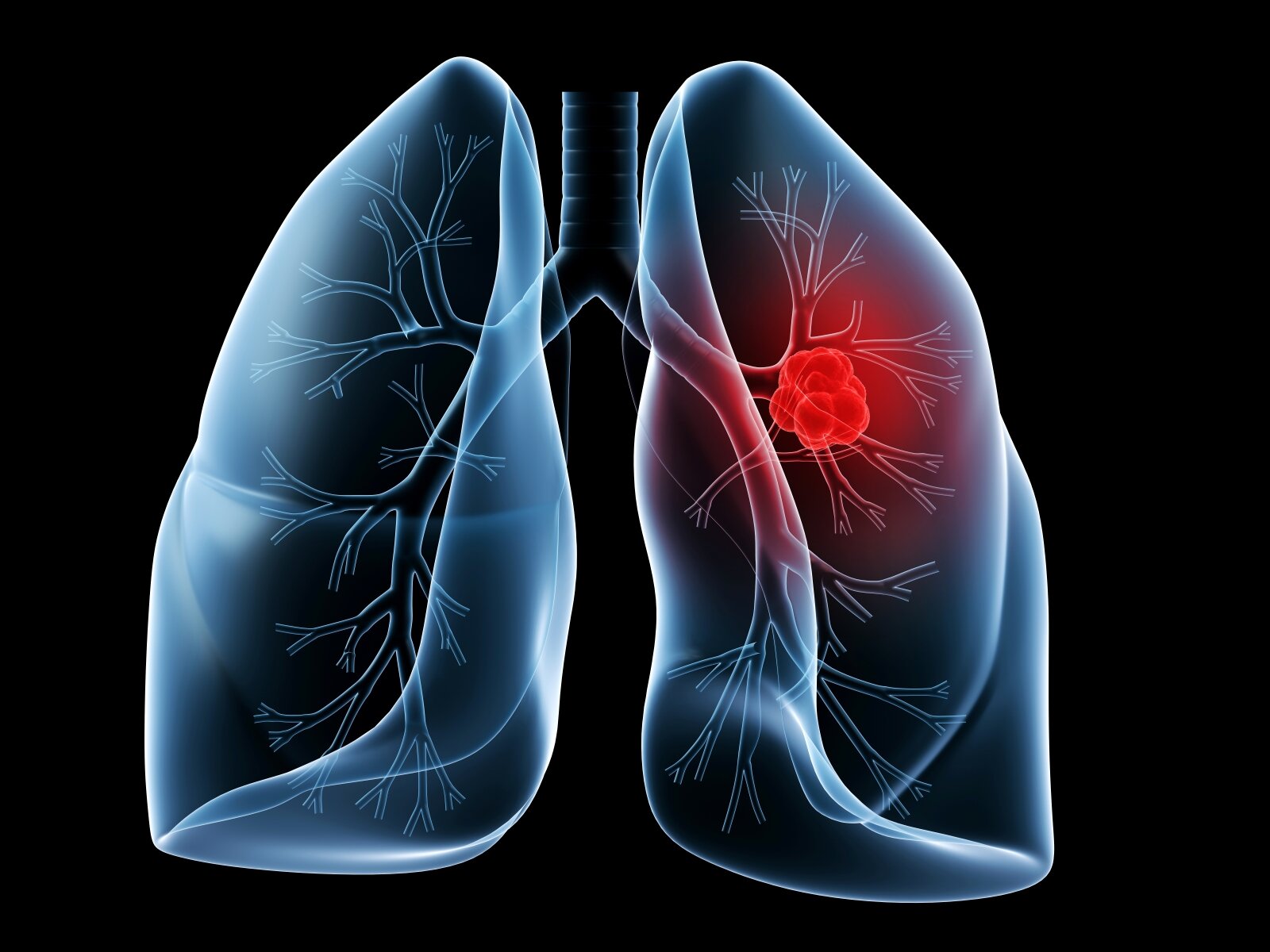Lung Cancer
Lung cancer begins in the lung. Human lungs are two spongy organs in the chest that take in oxygen when inhaled and release carbon dioxide when exhaled.
Lung cancer is the leading cause of cancer deaths worldwide, regardless of genre, age, and other risk factors.
People who smoke have the most significant risk of lung cancer, though lung cancer can also occur in people who have never smoked. The risk of lung cancer increases with the length of time and the number of cigarettes patients have smoked. Even after smoking for many years, quitting can significantly reduce the chances of developing lung cancer.
Lung cancer typically doesn’t cause signs and symptoms in its earliest stages. Signs and symptoms of lung cancer usually occur when the disease is advanced.
Signs and symptoms of lung cancer may include A new cough that doesn’t go away, Coughing up blood, even a tiny amount, Shortness of breath, Chest pain, Hoarseness, Losing weight without trying, Bone pain, and Headache.
Smoking causes most lung cancers — both in smokers and people exposed to secondhand smoke.

But lung cancer also occurs in people who never smoked and those who never had prolonged exposure to secondhand smoke. In these cases, there may be no clear cause of lung cancer.
Doctors divide lung cancer into two major types based on the appearance of lung cancer cells under the microscope.
The two general types of lung cancer include:
Small cell lung cancer: Small cell lung cancer occurs almost exclusively in heavy smokers and is less common than non-small cell lung cancer.
Non-small cell lung cancer: Non-small cell lung cancer is an umbrella term for several types of lung cancers. Non-small cell lung cancers include squamous, adenocarcinoma, and large cell carcinoma.
Lung cancer can cause complications, such as:
Shortness of breath. People with lung cancer can experience shortness of breath if the cancer grows to block the major airways. Lung cancer can also cause fluid to accumulate around the lungs, making it harder for the affected lung to expand when you inhale.
Coughing up blood. Lung cancer can cause bleeding in the airway, which can cause you to cough up blood (hemoptysis). Sometimes bleeding can become severe. Treatments are available to control bleeding.
Pain. Advanced lung cancer that spreads to the lining of a lung or another area of the body, such as a bone, can cause pain. Tell your doctor if you experience pain, as many treatments are available to control pain.
Fluid in the chest (pleural effusion). Lung cancer can cause fluid to accumulate in the space surrounding the affected lung in the chest cavity (pleural space).
Fluid accumulating in the chest can cause shortness of breath. Treatments are available to drain the fluid from your chest and reduce the risk that pleural effusion will occur again.
The cancer spreads to other parts of the body (metastasis). Lung cancer often spreads (metastasizes) to other body parts, such as the brain and the bones.
Cancer that spreads can cause pain, nausea, headaches, or other signs and symptoms depending on what organ is affected. Once lung cancer has spread beyond the lungs, it’s generally not curable. Treatments are available to decrease signs and symptoms and to help you live longer.
